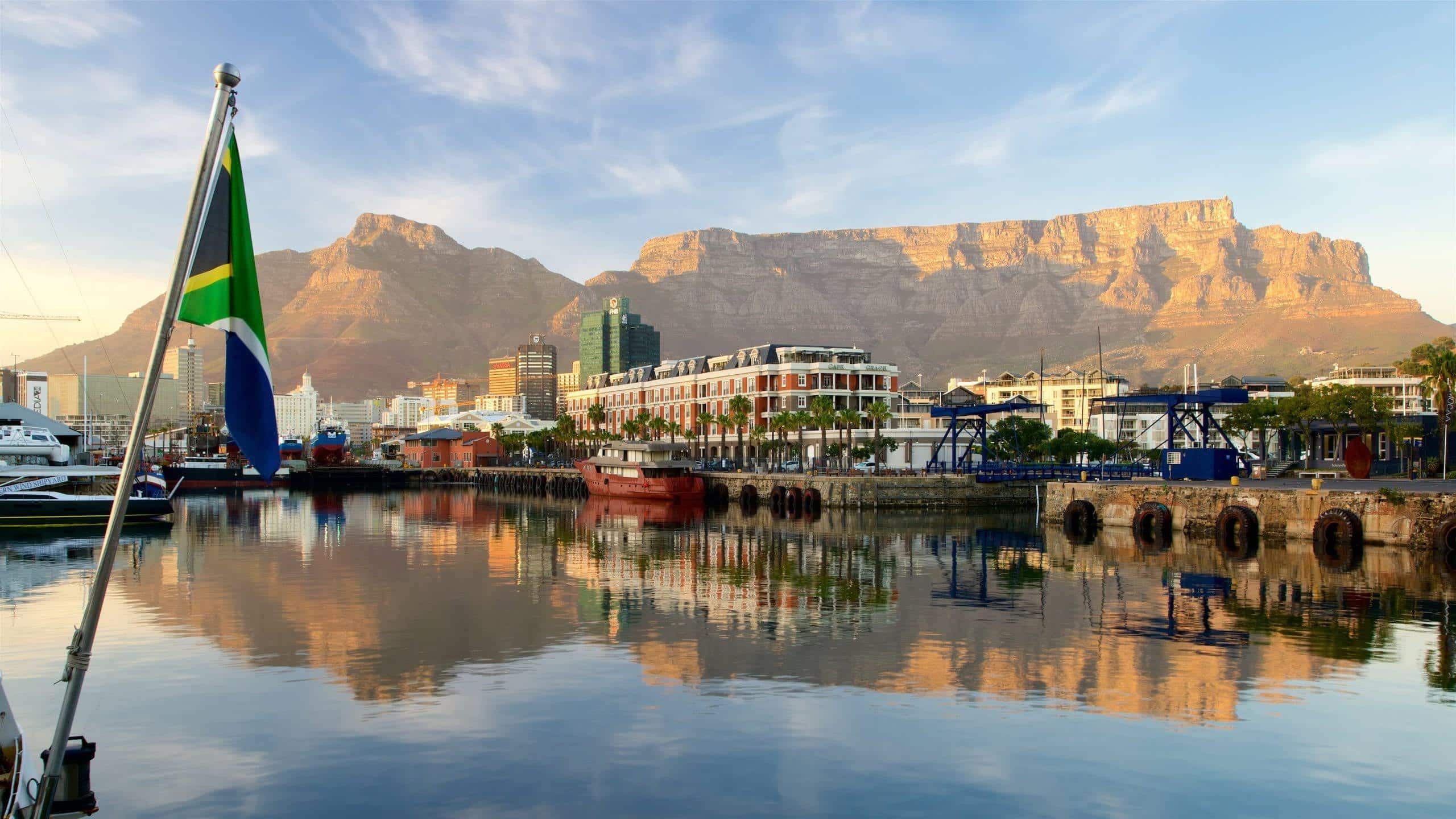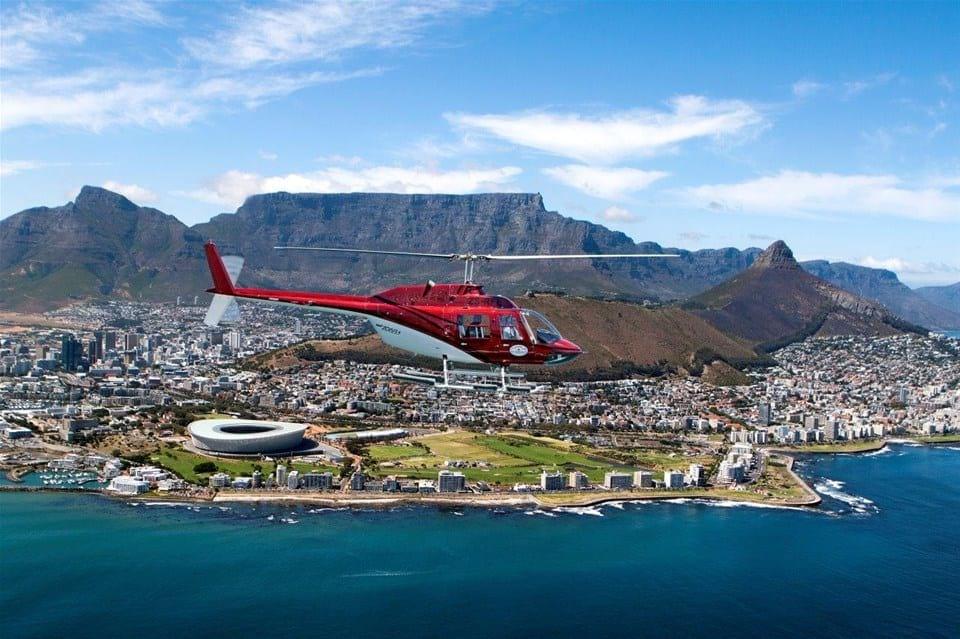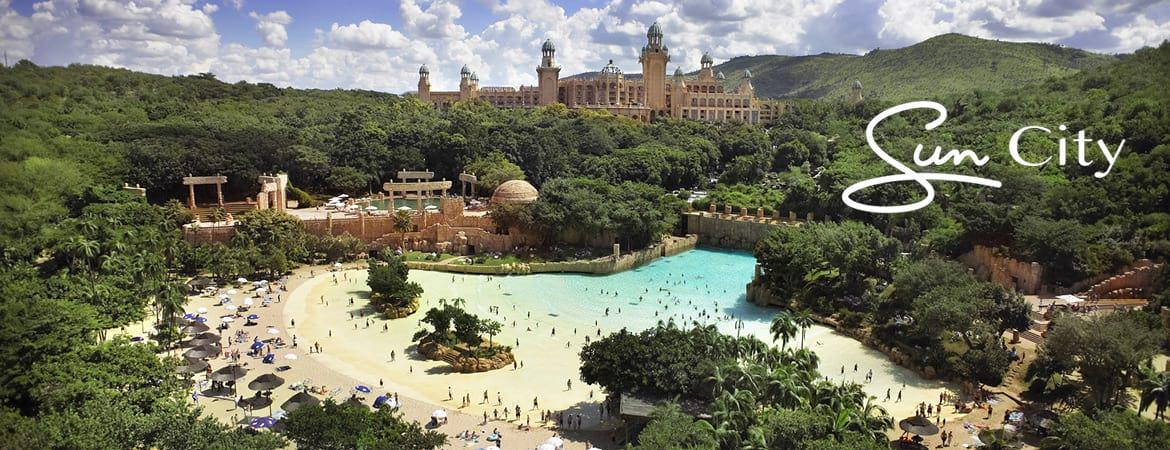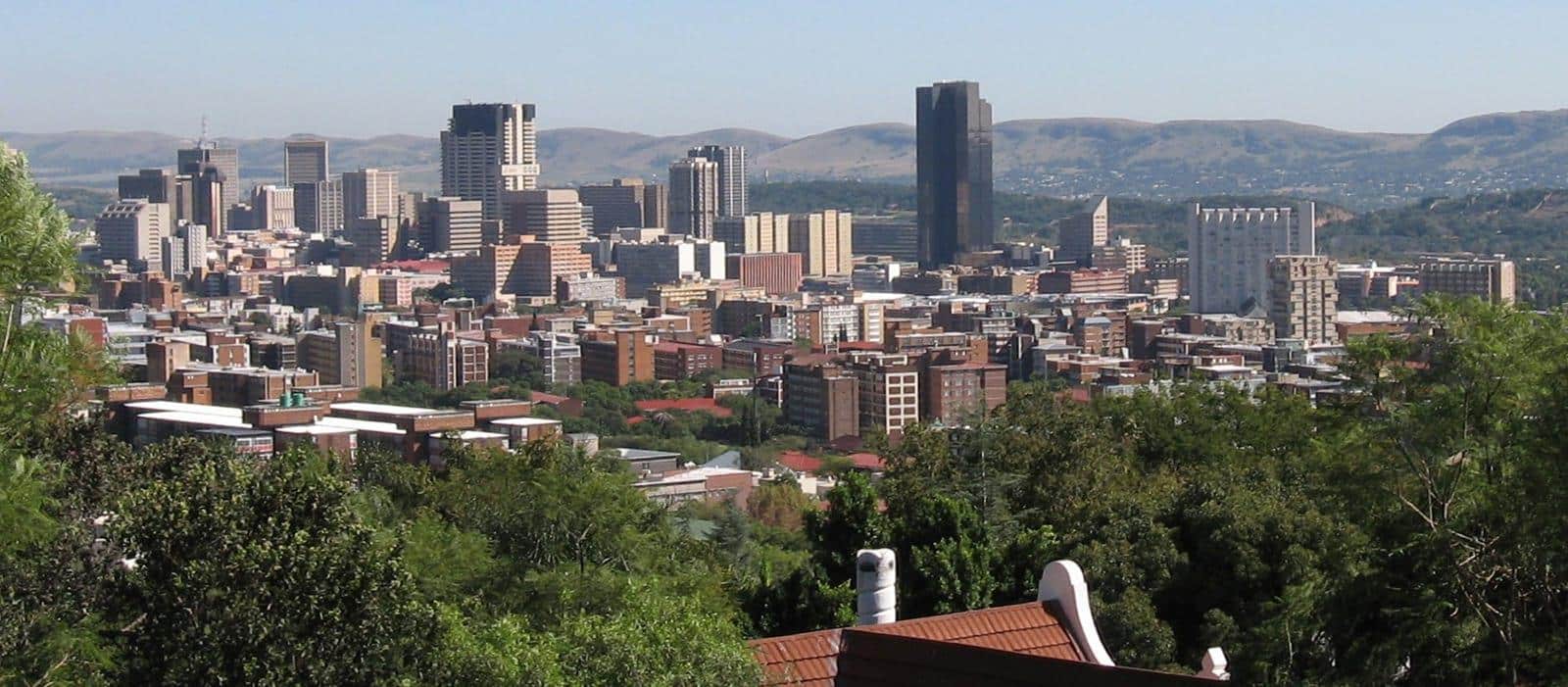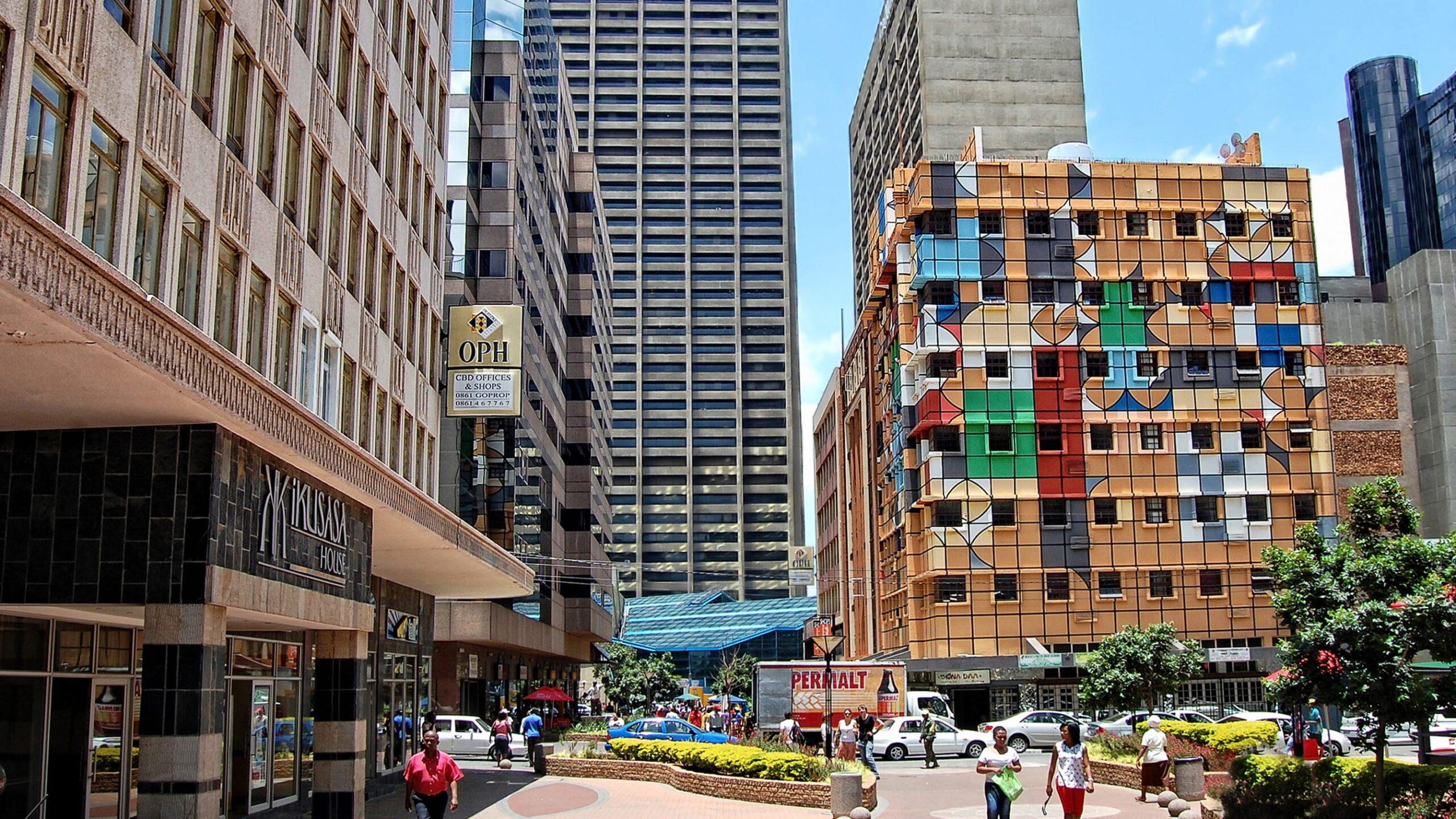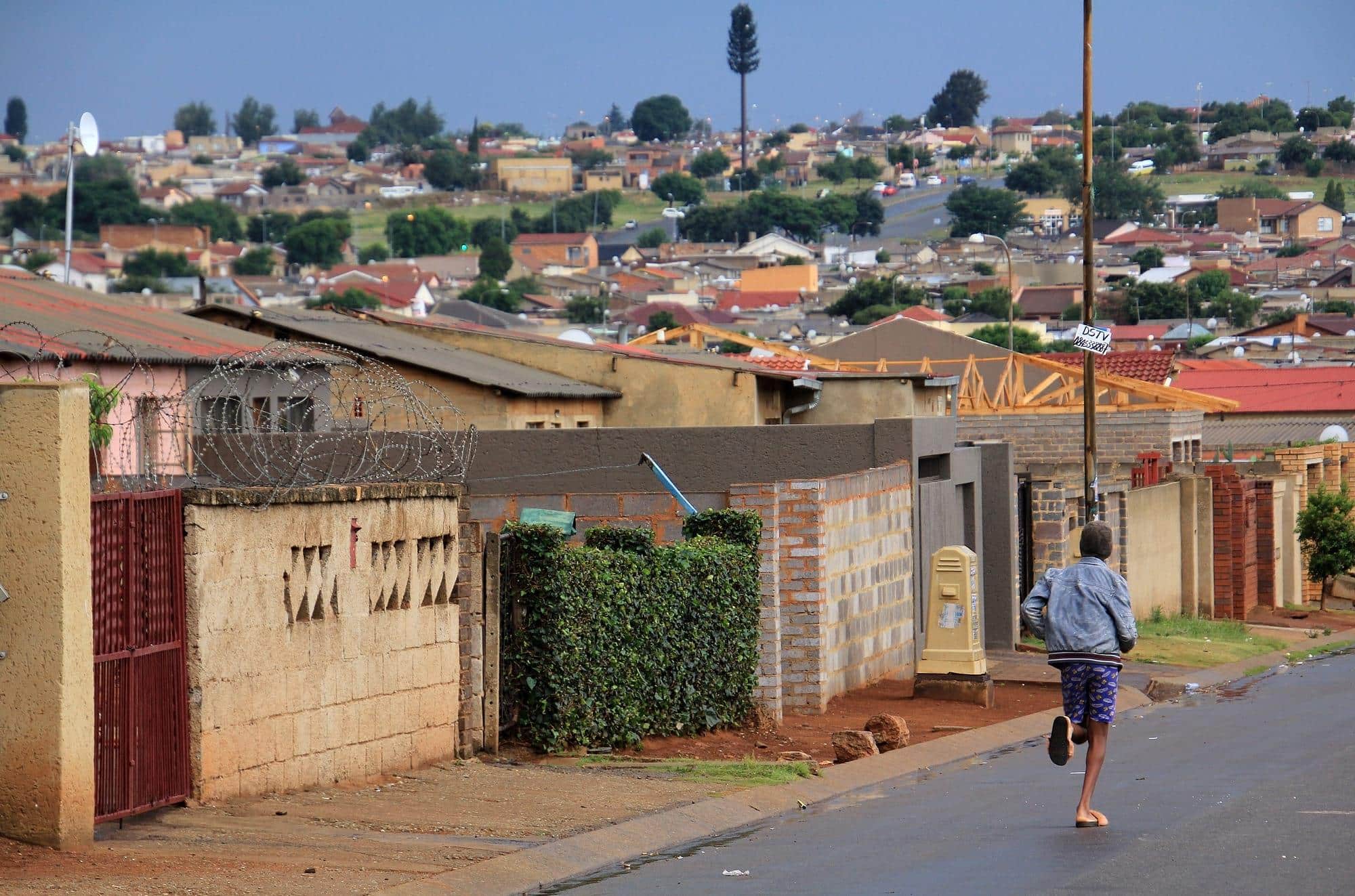Amboseli National Park
Introduction
The Amboseli National Park was formerly known as the Maasai Amboseli Game Reserve and is a national park in the Kajiado South Constituency in the Kajiado County of Kenya.
The name “Amboseli” is derived from the Maasai word that means “salty dust” and it is the second most popular national park in Kenya after the Maasai Mara National Reserve.
The park is crowned by Africa’s highest peak, Mount Kilimanjaro, which contributes to its popularity, but even without this magnificent attribute, it is also one of the best places in Africa to go on a wildlife safari and from where to see large herds of elephants up close.
Nature lovers can explore five diverse habitats in the park, which range from the dried-up bed of Lake Amboseli itself, to some wetlands with sulphur springs, the natural savannah and beautiful woodlands. Visitors can also learn more about the local Maasai communities that make a living around the park and see or experience the different facets of their authentic culture.
The Amboseli National Park covers 392 square kilometres or 151 square miles of an 8 000 square kilometres (3 100 square mile) ecosystem that spreads across the Kenya-Tanzania border.
Although the local people are mainly Maasai, people from other parts of the country that were attracted by the tourist-driven economy and intensive agriculture along the system of swamps, have also settled there.
The area along the swamps is conducive to intensive agriculture and one of the best wildlife-viewing venues in the world with hundreds of bird species, including more than 40 raptor species and water birds like pelicans, kingfishers, crakes, and Hamerkop.
Two of the five main swamps are protected within the park and it also includes a dried-up Pleistocene lake and semiarid vegetation.
A bit of history
Jeremy Thompson is believed to be the first European to have penetrated the feared Maasai region known as Empusel. This is the Maa word meaning ‘salty, dusty place’. This was in 1883 and he was astonished by the fantastic range of wildlife as well as by the contrast between an oasis of swamps and the arid areas of the dry lake beds, a contrast that still continues today.
In 1906 Amboseli was set aside as the Southern Reserve for the Maasai, but it was again returned as a game reserve to local control in 1948. In 1974 it was gazetted as a Kenyan national park in order to protect it as the core of this unique ecosystem. Since 1991, it has been declared as a UNESCO site.
The Amboseli ecosystem is typical of the problems of conserving communities of large migratory mammals in Africa with local pastoral herdsmen exerting pressures on wildlife because it doesn’t contribute to their own economy, even though the national value of wildlife through tourism was considerable.
Several programmes attempt to create an integrated use of the ecosystem, including the landowners in the benefits from the national park and thereby justifying the continued migrations of wild animals across park boundaries to them.
Since then community involvement in conservation has greatly improved by the Maasai communities that have settled beyond its borders and taken up agriculture. Ways to reconcile the needs of the community with the long-term survival of wildlife have been found since.
In the early 1990s, the Kimana Sanctuary, a small area near the Kimana Wetlands, were formed by members of the Kimana Group Ranch to create a community-based tourism facility. Although the business side of the sanctuary has since ended, the land remained a protected space.
Current administration
In 2005, Kenyan President Mwai Kibaki suggested that control of the park should pass from the Kenya Wildlife Service to the Olkejuado County Council and the Maasai tribe, which was seen by some observers as a political favour in advance of a vote on a new Kenyan constitution and challenged in courts.
The degazetting would have diverted park admission fees directly to the county council with shared benefits to the Maasai communities immediately surrounding the park.
As a national park, the Amboseli National Park is however administered by the Kenia Wildlife Service (KWS). The mandate of the KWS is to conserve and manage Kenya’s wildlife for the Kenyan people and the world.
It currently manages about 8 per cent of the country’ total landmass, with the country in total keeping up 22 national parks, 28 national reserves and 5 national sanctuaries.
Location
The Amboseli National Park is situated about 240 km (150 miles) south east of Nairobi, near the Tanzanian border and Mount Kilimanjaro.
How to get to the park
The park can be reached by air or road.
The park has a single airstrip for light aircrafts at Empusel gate, called the Amboseli Airport (HKAM). There are more airstrips at Kilimanjaro Buffalo Lodge and the nearby town of Namanga.
The main route to the park from the north and Nairobi is via Namanga on the road from Nairobi to Arusha.
One then enters the park through the Meshanani Gate, and the travel distance is about 240 km. The other possible route from Nairobi is via Emali on the Nairobi – Mombasa Road, a total distance of 228 km.
From the south, and Mombasa, access is mainly gained through the Tsavo West National Park via the Kimana (Olkelunyiet) Gate.
Geography
Amboseli National Park is located in the Oloitokitok District, in the Rift Valley Province of Kenya.
Five diverse habitats can be discerned in the park, ranging from the dried-up bed of Lake Amboseli itself, to several wetlands with sulphur springs, beautiful savannah and denser woodlands. Visitors to the park will be dazzled by far horizons over swampy springs contrasted by dry and dusty earth from being trampled by thousands of animals.
Amboseli has a boundless supply of underground water which is filtered through thousands of metres of volcanic rock from Kilimanjaro’s ice cap and funnels into two clear water springs in the heart of the park.
The climate has swung from flood to drought more than once, with incessant rain that for example changed Amboseli into a swamp in the early 1990’s but after a few years the rains had failed, the grass-covered plains turned to dust.
Weather and climate
Kenya experiences a variety of weather conditions during a year and most of its parks and reserves are located in areas that predominantly experience dry, warm to hot conditions. Only those parks in mountainous areas or forests are experiencing different conditions.
The climate is generally warm and humid at the coast, and cool and humid in the central highlands. The north and east are hot and dry. These climatic variations are caused by differences in topography across the country.
The parks and reserves however offer year round attractions and activities, making it viable for travellers to visit at any time, according to their different interests and schedules.
A distinction is made between two seasons, which generally correspond to local climatic conditions:
High season:
The months July to December and December to March are the best months to visit most of the Kenyan parks for wildlife viewing and other activities.
Wildlife viewing during these months is easier because of short grasses in the parks and plenty of food for wildlife, while a fair and sunny climate can be enjoyed by visitors.
Low Season:
During the months April to June the so-called long rains are experienced. During this time most roads in the park may require the use of four wheel drive vehicles. The season of the so-called short rains is experienced in November and December.
The roads in Amboseli have a loose surface of volcanic soil that can get very dusty in the dry season and impassable in the wet season.
Temperatures in the Amboseli National Park ranges from 20 degrees Celsius to 30 degrees Celsius and rainfall between 200 mm and 700 mm per annum can be expected.
Wildlife of the park
The Amboseli National Park protected area is home to several species of animals, like the African bush elephant, Cape buffalo, impala, lion, cheetah, spotted hyena, Masai giraffe, Grant’s zebra, and blue wildebeest. Many large and smaller bird species occur here too.
The park is famous for being one of the best places in the world to get close to free-ranging elephants. Other attractions of the park include views of Mount Kilimanjaro, the highest free-standing mountain in the world as well as the opportunity to get acquainted with the Maasai people by visiting a Maasai village.
Amboseli was the home of Echo, possibly the most researched elephant in the world, and the subject of many documentaries and books. She was followed by American conservationist Dr Cynthia Moss for almost four decades until she (Echo) died in 2009 when she was about 60 years old.
The Amboseli vegetation is sparse due to the long and dry months, hence offering some of the best opportunities to see African wildlife. Due to its popularity as game viewing venue, the park has imposed several strict rules to protect its wildlife.
Visitors may not leave their vehicles, except at designated spots and they may not harass the animals in any way. Vehicles should always keep to the tracks and no off-road driving is allowed. Animals must always be given the right of way.
Research and conservation
The Amboseli National Park is taking its conservation purpose very seriously and is the centre from which at least two major research projects are run.
The Amboseli Elephant Research Project is a long-term research project operated by the non-profit Amboseli Trust for Elephants and run on the ethology of the African elephant. The project studies elephants’ social behaviour, population dynamics and age structure.
The project was initiated in 1972 by Cynthia Moss and Harvey Croze and is the longest running study of elephant behaviour in the wild. It has gathered data on life histories and association patterns for almost 2 000 individual elephants.
Due to concern by the Maasai people and the constant presence of tourists and researchers, relatively few poachers have been active in Amboseli Park. The area is monitored by game wardens and scientists throughout the year, thus Amboseli is one of the few regions in Africa where the age structure of elephants has remained undistorted.
Another project, the Amboseli Baboon Project, is a long-term research project on yellow baboons (Papio cynocephalus) in the Amboseli basin. The project is based in the south western parts of the Amboseli ecosystem, near Kilimanjaro with its main research on the southern border of the park, near the former Olgulului Public Campsite.
The project started in 1971, making it one of the longest-running studies of a wild primate in the world. Research at the project focuses on processes at individual, group, and population levels, and in recent years has also included other aspects like genetics, hormones, nutrition, hybridisation, parasitology, and relations with other species.
The initial study of the project ran in the early 1960s, with a follow-up study in 1969 and the long-term, coordinated project established in 1971.
Since then, individually recognized baboons within the study groups were followed on an almost daily basis and the majority of the data is collected by long-term field observers. Over the time that the project existed, it has produced more than 230 peer-reviewed articles, reports and popular accounts.
Tourism
The environment and tourism have always been indistinguishably linked in Kenya, creating a unique symbiotic relationship among the different sectors and role players.
Among the main attractions of the country, and Amboseli National Park in particular, count the large herds of elephants, Mount Kilimanjaro, sightings of the so-called Big Five and a visit to Observation Hill which allows a magnificent overall view of the whole park, especially of the swamps and elephants. The swamp below Observation Hill is home to many elephants, buffaloes, hippos and a variety of waterfowls like pelicans and Egyptian geese.
The contemporary Maasai culture and their indigenous lifestyle is another attraction that occupies the attention of the more culturally minded visitor.
Of the many decisions any traveller will need to make when planning to go on an African Safari, one of the most important ones will be which game reserve to visit – that is if you don’t have the time or budget to visit a number of them.
Although you may not have thought about the Amboseli National Park previously, it may just as well move to the top of your list. This park in the south west of Kenya, not too far from Nairobi, is a gorgeous park on its own and offers the bonus of a great view of Mount Kilimanjaro.
So, while there is so many parks and reserves in Kenya to choose from, the question remains whether Amboseli is worth visiting? The answer is a definite yes, since although it has a number of similar attractions as some of the other popular national parks in Kenya, it has also its own unique safari atmosphere and great diversity, conducive to an experience of a lifetime.
Saying this, Amboseli National Park and the Maasai Mara National Reserve (also in Kenya) are fairly similar, so if you are constrained regarding budget or time, you may safely skip the one or the other without the risk of missing out on much.
You will probably have very similar experiences in both parks and a choice will solely depend on whether you love elephants and want to see lots of them. While the Maasai Mara has a greater diversity of animal, the Amboseli is the place to encounter these gentle giants of nature. The Amboseli National Park has a population of more than 1 200 elephants and due to the fact that it is a small park, you will surely run into a lot of them during your stay.
Other benefits of visiting the Amboseli National Park include the fact that it is very well maintained, probably due to the fact that it is not such a large park. The park rangers are in a position to keep a close watch on all the animals while also maintaining all the roads in a fair condition.
There is still a great enough diversity of animals and birds in the Amboseli, making it a wonderful place to visit if you want to see those large numbers of animals and diverse species of birds, while staying in a more intimate environment.
The beautiful scenery of the Amboseli deserves to be mentioned on its own. With its dry land, swamps and Mount Kilimanjaro on the horizon, the park really offers beautiful sceneries.
The dry season is always the best time to visit any of Kenya’s national parks and the Amboseli is no exception. The park gives the same wonderful show of large herds of animals that congregate near water points during the dry months. And with herbivores gathering near the few water bodies in the park, the carnivores also get drawn to the water in search of prey.
Make sure that you keep your cameras at hand for a possible chance of seeing a hunt.
Amboseli is located at the foot of Mount Kilimanjaro and you should be lucky enough to catch a glimpse of the magnificent mountain once in a while. The reason why such a view is not guaranteed, is because the mountain is all year round mostly covered by thick clouds. While this view is not guaranteed, it does not mean that one should not always be looking out for it.
While there is many benefits in visiting the park, the distance from Nairobi may be one factor that make visitors rethink. The Amboseli is about four hours’ drive from Nairobi, which may be uncomfortable for some, especially the elderly.
The stretch of road from the Namanga junction into the park itself is rough and dusty and may prove to be a bit of a turn-off.
Another deterring factor may be the fact that there are no rhinos in the Amboseli National Park. If it was on your bucket list to spot all the big five, then the Amboseli may not be the best place to visit.
The entry fees to access the Amboseli National Park is higher than most of the other Kenyan national parks and added to the fact that it is also very far from Nairobi, may negatively influence a decision on which park to choose if you can’t visit more than one of them.
The Amboseli National Park is not as big as some of the other parks in Kenya, so you need not spend so much time in the park. But the park is most definitely worth visiting if you have some extra time and money, even after visiting the Maasai Mara too.
The bottom line is however, that Amboseli should not be the only park you visit when in Kenya.
The best times to visit the Park according to different factors and sightings
The wildlife in Amboseli National Park tends to congregate around very few watering holes during the dry season and disperse when the availability of water is increased throughout the park due to rains. This is the same weather patterns that will also affect your comfort, travel costs and accessibility to game activities, so all climate-related Amboseli information may eventually help you plan your dream Kenya safari.
If you are in a lucky enough position to decide which month of the year you can make your way to Kenya and the wildlife its parks offer, you are of course privileged to pick and choose what you want to go and experience and choose your destination accordingly.
If this is the case, a description of the different seasons may help you decide which time of year to plan your safari. On the other hand, if you only have a certain window of opportunity, the same summary may help you decide which attractions you want to experience more than anything else.
The Amboseli National Park is open all year round and can be visited by day visitors daily between 06.00 and 19.00, including public holidays. No entry is allowed on foot and visitors will not be allowed entry after 18.15.
Throughout the year the average temperatures in the park are moderate, although it is always advisable to bring a warm jacket or sweater for game activities during early mornings or evenings, as it may get quite cool.
During the rainy seasons, you will act very wise to bring a waterproof coat or rain poncho. During the dry season from July to October little to no rainfall occurs, and this is considered to be a very good time of year to visit Amboseli Park. Not that rain necessarily will stay completely away, since the last showers of a very long rainy season may occur in June and late October may already see the beginning of the short rains.
Locating wildlife is easier during the dry season due to the fact that the vegetation is not as thick as a result of the shortage of rainfall, and the waning in pasture and water brings the animals to the few remaining water sources.
Less precipitation means fewer insects, including mosquitoes. With malaria rife in many parts of eastern Africa, this is surely something to keep in mind.
Overall, the days during this time are gorgeous, with the skies being clear and bright blue. This is normally the peak tourist season, since visitors from around the world flock to the region to see the wildebeest migration in Maasai Mara. Since many of them also plan to include a short trip to Amboseli Park, many more visitors than other times of the year will be gathered in Amboseli too, and accommodation, activities and other costs will be higher than during the low season.
The short rains occur in November and December, afterwards followed by a short and hot, partly dry and humid season during January and February before the long rains arrive in April, May and parts of June.
This wet season does have its own advantages and disadvantages. The rains bring much welcomed life to the plains, both regarding flora and fauna, and the landscape is soon transformed into lush green spreads.
Wildlife viewing will still be possible and actually quite rewarding, since now is the time that you may witness many newly born zebra foal on its wobbly legs, young Thomson’s gazelle hiding from predators in long grasses and elephant calves being cared for by their mothers with the help of an attending herd.
The start of winter in Europe also brings migratory bird species to the Amboseli National Park from October to April, making it a wonderful destination for bird watching in Africa.
One disadvantage of visiting Amboseli during the rainy season is that logistics can become quite demanding due to the precipitation. Some roads may get very challenging to navigate. Getting into the Kenyan parks can be overcome by flying into them rather than driving in though.
This is especially applicable during late March, and in April, May and early June, when the rains are at its heaviest. During the other short rain months, the rainfall is usually much lighter and occur only in the late afternoon and evenings. Fortunately, evaporation is very fast in equatorial Kenya, resulting in little, if any, impact on bush travel in the country.
Few of the camps and lodges in Kenya close during the rainy season, and many of those that remain open may charge reduced rooming rates. Other costs like park fees, meals, safari activities, logistical transfer costs and related governmental taxes, however, remain the same all year round.
Since Amboseli National Park is a popular safari destination during Easter school breaks, Christmas and New Year, both visitors from overseas and local residents may make use of the remainder of the low and mid-season, resulting in higher guest numbers during those periods.
While views of Kilimanjaro are hit-and-miss, chances slightly better in the early morning and late afternoon during the wet season months of November through to May, when the sky is clear of dust.
In short:
The best time for general wildlife viewing is June to September and January to February, with little to no rainfall.
High season is December to March and July to October, when the reserve can get quite busy.
Low Season is from April to June and low season rates may apply.
The best weather is experienced in June to September and January to February, with little rainfall and the worst weather is experienced in April, the wettest month.
Dry Season stretches from June to October and then wildlife watching is better and more pleasant because animals gather at water sources and days are mainly sunny, with almost no rainfall. Malaria is also much less of a problem in the dry season, but it can get quite dry and dusty.
During the wet season months of November to May, the park is scenically at its best with plenty of animals still to be seen despite being the wet season. Planned activities, such as game drives, may be interrupted during the peak rainfall months, especially in April.
April to June marks the so-called low season and lower rates may apply, but it may be the best time for bird watching because lots of migratory birds are also present. Views of Kilimanjaro are best after rainfall, when the sky is clear of dust but then the road conditions may be bad.
Costs and Fees when visiting
Once you’ve decided to go on this one-of-a-kind safari and visit the Maasai Mara, the next step would be to determine your budget and consider all of the costs and fees applicable.
A different entrance fee structure is applicable for citizens, residents and non-residents.
Fees for citizens are 860 KSH for an adult and 215 KSH for a child. For residents the fees are 1 030 KSH for an adult and 515 KSH for a child. Non-residents pay 60 USD for an adult and 35 USD for a child.
Payment of these fees can be made via MPESA, VISA Card, direct deposits to KWS Bank accounts or at any gate.
If you are visiting the parks on a package tour, your tour operator will most probably include park entry fees in the total cost of your safari. However, if you are visiting on a self-organized tour, you do not need to pre-pay your park entrance fees, Park entrance fees, camping fees and self-catering accommodation fees are paid on arrival at the park gate.
In the five major Parks, Aberdares, Tsavo East, Tsavo West, Nairobi and Amboseli National Parks entrance are also allowed by Smartcard, while other parks require the paper tickets.
Kenya Wildlife Service also offers a Safari Card system, which is an electronic ticketing system used by its visitors to enable access to selected national parks as well as for services like camping in these parks.
There is a difference between a Smartcard and Safari card. The Smartcard was the initial electronic based ticketing system, which has since been overhauled in favour of the Safari Card. The Safari card system provides a one-stop-shop as the Point of Issue and Point of Sale are merged.
You can get two types of Safari card, personalized cards and temporary cards.
The personalised card is issued to customers who want to enjoy the conveniences of loading value to their cards prior to visiting the park. It is issued at a once-off administrative fee.
Temporary cards are issued to once-off park visitors. They must visit the respective park headquarters on the day of visiting to be issued a card and value topped up for the visit. The card expires 24 hours after issue and is surrendered at the gate when exiting the park.
Safari cards are used to gain access to Nairobi, Amboseli, Tsavo East, Tsavo West, Lake Nakuru, Aberdare and Malindi Marine National Parks. All other parks use the paper ticket system.
Accommodation
There are a variety of visitor accommodation facilities in the parks and reserves of KWS to suite the taste, budget and safari style of each type of visitor. Within every park, visitor accommodation range from luxury lodges and tented campsites to private budget campsites operated by individual operators.
Amboseli National Park offers a variety of accommodation, from the bush luxuries of Tortilis Camp, deluxe experiences of Satao Elerai to the modest Kibo Safari Camp. Visitors that prefer a safari lodge, can stay at Amboseli Serena.
KWS runs public and special campsites, and self-catering accommodation units (called Bandas) which provide accommodation for visitors wanting an experience away from the beaten track close to the wild.
In Amboseli KWS runs self-catering accommodation units at Kilimanjaro Guest House, Simba Cottages and Chui Cottages and offers camping at Amboseli Campsite.
There are also several privately owned lodges in the park, ranging from luxury to budget offerings.
Things to remember when visiting
What do you need to pack and bring along on a safari to Kenya Wildlife Service Parks and Reserves?
Visitors to the wide network of parks and reserves will experience a wide range of climatic conditions, which will depend on the time or seasons of their visit.
Clothing
They should therefore pack clothes that are adaptable to cold or hot temperatures. Many of the parks are located in areas at low altitude where one may experience temperatures ranging from warm to very hot during the day but also cool to very cold in the evenings.
It is thus advisable to take outfits and clothing items that can be layered so that you start well prepared for cold in the morning and can “peal of” the layers as the day warms up towards the hot afternoons.
Basic clothing that would be suitable include loose fitting long trousers and shirts or T-shirts, definitely a hat and sunglasses against the sun, and preferably lace up shoes. Clothing should be in natural, earthly coloured or khaki shades. A number of shops in the parks offer locally made safari outfits, which can double serve as a memento.
It is wise to bring along a bird guide, mammals guide and a map of the country and the park or buy these from one of the gift shops.
Other essential things to include in a safari bag include a torch, insect repellent, binoculars and a camera with an extra memory card. It is also wise to have your own small, basic medical kit that includes any basic remedies such as antacids, painkillers, anti-histamines and cold remedies.
Vaccinations
Visitors to the country require vaccination against cholera and yellow fever, but other vaccinations that are also recommended include those against typhoid, tetanus, and hepatitis. While some vaccinations need a course of injections, you should think about that long before your safari to allow sufficient time for that.
Prophylactics may be taken as a precaution against Malaria, and have to be taken before, during and after a visit to Kenya. Further prevention against bites such as an insect repellent and mosquito nets are also advised.
Food
Meals are generally included in a safari package, so make the operator aware of any dietary restrictions. If you anticipate requiring extra snacks or water, obtain that before you set out on your safari.
Transportation
There are two main options for safari travel within most parks: safari vans and land cruisers. Safari vans are the more budget-friendly option. The rides will be bumpier and offer limited views since they are usually covered over.
Land cruisers are more traditional open-air vehicles that allow the best visibility and more comfort, but they are of course more expensive.
Tipping
While tipping isn’t compulsory on safari trips, tips are always much appreciated and can make a big difference in the lives of your local guides.
Cash or card
Remember that there will likely be fees and commissions associated with international withdrawals or card payments. Also, while ATMs will be available in major cities, they are few and very far between in remote areas. Many smaller venues might only accept cash.
Currency
The currency in Kenya is the Kenyan Shilling (KSH) and must not be confused with the Tanzanian or Ugandan Shillings.
US dollars are usually accepted on airlines as well as in major hotels and national parks, but it may be a good idea to obtain some local currency for tips and shopping too. Exchange bureaus are easy to find and generally offer the best rates.

